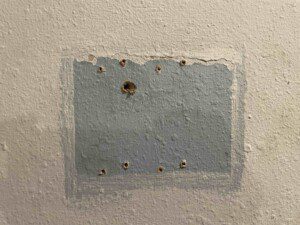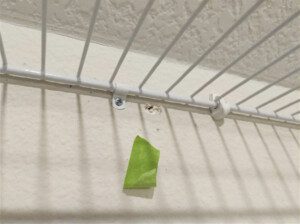
Before you begin, we strongly recommend that you test your home’s drywall for lead paint and asbestos – especially if the home was built before 1978. Wearing a respirator whenever doing drywall repairs is a good idea, however extra precautions will need to be taken if the walls have lead paint or asbestos.
Small holes, dents, and dings in the drywall can be scraped and covered with spackle. After the spackle is dry, you can sand it smooth and repaint the wall. Spackle should be used for small area repairs that are not very deep. Spackle will crack if it is applied to a large area or is applied too thick.

We recommend applying a primer to the wall before painting the area that has been patched. This will help the patched area blend better with the rest of the wall.
Medium-sized holes can also be patched with what is known as a “California patch.” For a California patch, the new piece of drywall is cut approximately 2 inches larger than what is needed to cover the damage and the extra gypsum is removed to leave the paper backing in place. The paper is then set with joint compound and takes the place of furring strips. This method of repair does not require taping the joints of the repair and can be faster than using furring strips.
You can find more information about drywall repairs in the following video:
